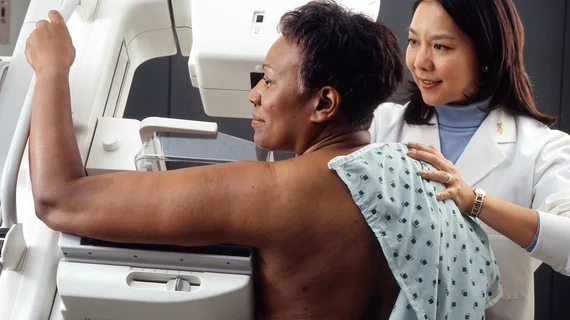FDA proposed rule ‘modernizes’ mammography screening, includes breast density reporting
The FDA announced Wednesday, March 27, that it is taking action to “modernize” breast cancer screening in the United States by amending the Mammography Quality Standards Act of 1992 with a new proposed rule.
“Breast cancer is one of the most worrisome health concerns facing women,” Scott Gottlieb, MD, outgoing FDA commissioner, said in a prepared statement. “The FDA plays a unique and meaningful role in the delivery of quality mammography to help patients get accurate screening to identify breast health problems early, when they can be effectively addressed. As part of our overall commitment to protecting the health of women, we’re proposing new policies to modernize our oversight of mammography services, by capitalizing on a number of important advances in mammography, like the increased use of 3-D digital screening tools and the need for more uniform breast density reporting.”
The proposed rule would add breast density reporting information to all summary letters sent to patients after they undergo a mammogram. This requirement was signed into law back in February, so providers may have anticipated this change. Similar requirements are already in place in more than 30 states throughout the United States.
Another proposed amendment involves adding additional categories for the final assessment of a mammogram—“known biopsy proven malignancy” and “post-procedure mammograms for marker placement”—and another new category for when the assessment is incomplete, “need prior mammograms for comparison.”
Other proposed changes include:
- The FDA could directly notify patients and their healthcare provider when a mammography facility does not meet certain quality standards.
- Only digital accessory components approved by the FDA could be used for mammography. “All equipment must be designed for mammography,” the proposed rule states.
- Record-keeping requirements would be improved.
“Once finalized, these proposed amendments will enhance our oversight of mammography facilities, including in the key area of enforcement and patient communication,” Jeff Shuren, MD, JD, director of the FDA’s Center for Devices and Radiological Health, said in the same statement. “While the majority of certified mammography facilities are dedicated to providing high levels of patient care, today’s proposed regulations would enhance the FDA’s ability to communicate directly, if needed, with patients and their health care professionals in cases where facilities did not meet our quality standards and are not adequately communicating with patients about their facilities’ deficiencies.”
The proposed rule is available to read through the Federal Register. There will be a 90-day public comment period.

